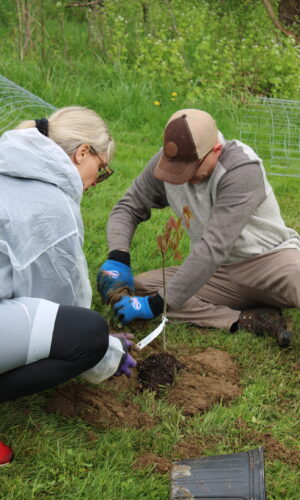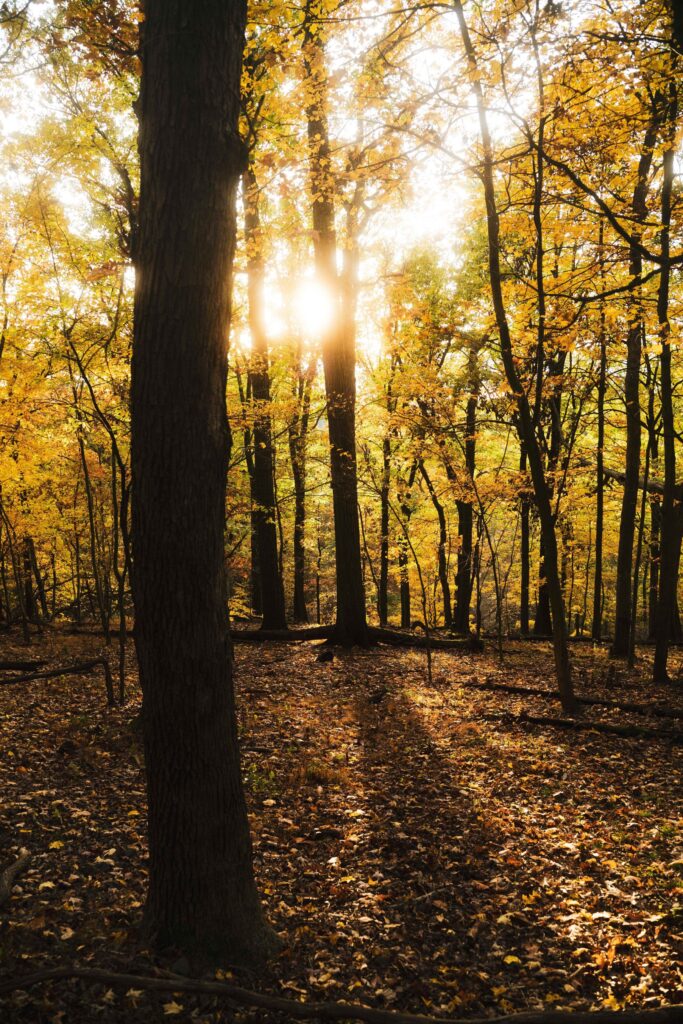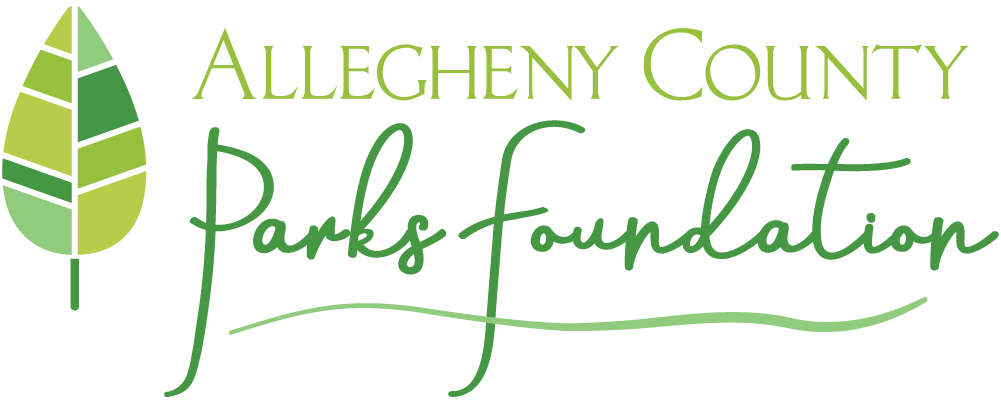Oct 05 Fall Foliage in Your County Parks

The arrival of fall in Allegheny County brings with it a mesmerizing array of leaves that blanket the ground, creating a visual symphony of colors and textures. Not only do the color changes of fall get us excited for their beauty, they also tell an important ecological story that directly ties into our conservation work in the parks. In this blog post, we’ll first dig into the importance of our work to plant more trees, and thus add more leaves in your parks. Then we will look at a few different native types of leaves that you could find on a walk in any of the nine county parks.
Trees are a Vital Part of Park Projects
Every year, the Allegheny County Parks Foundation plants trees, in partnership with Allegheny County, as a way to fulfill our mission to improve, conserve and restore your 9 Allegheny County Parks. In addition to their majestic beauty, trees improve the parks’ ecology by increasing our region’s declining tree canopy, shoring up riparian borders to clean rainwater that flows into streams, helping storm water management by absorbing runoff, cleaning our air, and providing shelter and food for birds and wildlife. In fact, since our work began we have reforested over 22 acres of land by planting 10,800 trees, shrubs and live stakes across your 9 county parks.
A majority of our park projects – both small and large – prioritize tree planting into their scope. This commitment to reforestation is thanks in large part to the information we collect as a part of our Ecological Assessments and Action Plans. These environmental blueprints guide us as we embark on park projects that leave a lasting ecological legacy in your communities and positive impacts in your parks.
A recently announced park project that focuses specifically on tree planting is our Playground Parking Area Tree Planting in South Park. This project demonstrates how simple changes to underutilized impermeable surfaces in our parks can be transformed to green spaces that improve water quality, create flood reduction and lower ambient air temperatures.
Tree plantings can also complement park projects, like riparian buffer projects and meadow implementation projects. A great example of the former is the work we are currently doing at the North Fork of Pine Creek riparian buffer in North Park. This ongoing project, located just upstream of North Park Lake, will increase the longevity of the lake and repair 2.1 acres of the riparian (stream side) zone in the North Fork Pine Creek Watershed by removing invasive species and planting meadow mix, live stakes, and trees and shrubs of varying species to create a diverse canopy that provides varied sources of food for wildlife. An example of a tree planting at a meadow project is our work in Hartwood Acres at the Caren Glotfelty Meadow, which saw the planting of riparian trees and shrubs to shore up the stream bank and further absorb excessive runoff along Little Pine Creek.
A major project that focuses on the importance of tree canopy is the founding of Suffragist Grove in Hartwood Acres Park. This project is dedicated to the beliefs and actions of Mary Flinn Lawrence, who in 1927, planted 96,000 pine seedlings in Hartwood Acres to help combat soil erosion and restore the health of Hartwood Acres. Approximately 50 trees have been planted at Suffragist Grove so far, and work will continue in this area.
Lastly, in 2020, the Parks Foundation established a Tree Fund Program, which allows donors to direct their donation specifically towards tree plantings in memory or honor of a friend or loved one. This is a great way for donors to connect to our work, and make a lasting impact quite literally for generations to come. Funds from this program are used to plant trees throughout the 9 parks and enhance the spaces for all who come to use and enjoy the parks, offering shade, beauty and cleaner air for visitors.
Did You Know: Leaves are essential components of the forest floor and their presence serves several crucial ecological functions that contribute to the overall health and sustainability of forest ecosystems.
- Nutrient Cycling & Carbon Sequestration: When leaves fall to the forest floor they undergo decomposition, which is facilitated by fungi, bacteria and other microorganisms. Those organisms break down the matter in the leaves and emit nitrogen, phosphorus and potassium which is then made available to plants and trees, effectively recycling them within the ecosystem, while enriching the soil. When leaves fall to the forest floor, they also sequester carbon in the soil, which can help reduce the effects of climate change by reducing CO2 levels and help to improve the air we breathe.
- Moisture Regulation & Erosion Control: Leaf litter on the forest floor acts as a natural mulch, which helps to retain moisture in the soil. This moisture retention helps to protect plants during dry periods, reduces soil erosion by acting as a protective barrier against rain and wind, and maintains a stable temperature for soil organisms.
- Habitat, Shelter & Food: Leaf layers create microhabitats for organisms, insects, spiders, millipedes and small mammals to live. The leaf layers are also a primary food source for earthworms, snails and all different kinds of mushrooms. All these small creatures then become vital food sources for larger animals and birds, which enriches a forests biodiversity.
Learn more about applying this concept at home and skip raking the leaves in your yard this fall!

While our parks are full of amazing varieties of trees, here are 9 of our favorites that we recommend you go and find this fall!

Birch – The delicate, heart-shaped leaves of birch trees shimmer like gold in the autumn sunlight. Their pale yellow and bright gold provide a striking contrast to the deeper hues of other leaves falling in our region.
Dogwood – Dogwood trees are known for their oval-shaped leaves that turn shades of deep red and purple in the fall. These smaller flowering trees often grow as understory plants in our region’s woodlands, creating pockets of vivid color beneath the taller canopy trees.
Hickory – Our parks are home to several hickory tree species and their leaves turn a rich, golden-yellow in the fall. Hickory leaves are characterized by their serrated edges and pinnate arrangement, creating a charming display as they fall to the forest floor.
Maple – One of the most vibrant trees in our region in the fall is the maple tree with its beautiful red, orange and yellow leaves. The sugar maple, in particular, dazzles with its fiery foliage.
Oak – Oak trees, known for their resilience and longevity, contribute to the fall spectacle with leaves that turn various shades of red, brown and russet. The size and shape of oak leaves can vary depending on the species, but they each share a distinctive charm.
Sassafras – Sassafras trees have leaves that are highly unique because they have three distinct types of leaves – unilobed, bilobed and trilobed – that each turn yellow, orange and red in the fall. The Sassafras is highly aromatic so be sure and tap into your sense of smell when you see one of these trees on a walk or hike!
Sweetgum – The leaves of the sweetgum tree burst into a brilliant mix of red, orange and purple during the fall season. They are often seen strewn across the forest floor, creating a captivating contrast with the green moss and dark earth.
Sycamore – Sycamore trees, with their large, palmate leaves, contribute to the mosaic of fall foliage in the region. These leaves turn a muted yellow and brown, adding a rustic touch to the landscape. The distinctive mottled bark of the sycamore tree adds to their fall appeal.
Witchhazel – Witchhazel leaves are the last tree to bloom in the fall which paints an amazing contrast of yellow and red leaves and beautiful yellow buds.
Our region’s fall foliage is a sight to behold, and the diverse array of leaves that adorn the ground adds a layer of enchantment to the season. Leaves also play a vital part of the delicate balance that sustains a healthy and biodiverse forest. From the fiery reds of maple leaves to the golden shades of birch leaves, each type of leaf contributes to the region’s unique autumn tapestry while helping to build a stronger, more resilient forest for years to come. We hope you take the time to visit your parks this fall and enjoy all that the autumn season has to offer – from the tallest tree to the smallest leaf.

